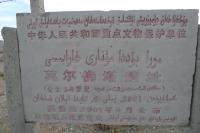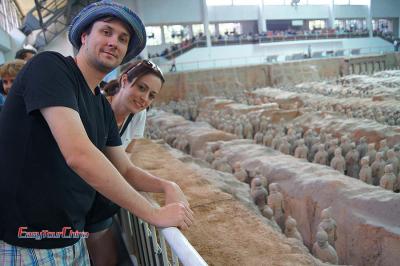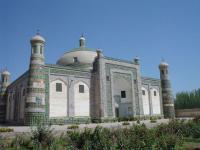Mor Buddhist Pagoda
 Located about 40kms northeast of Kashgar city, Mor Buddhist Pagoda was built in 7th century during the Tang dynasty and destroyed around the 12th century. Buddhism staged out of the historical arena in the middle of 10 century A.D. when Islamism was formally introduced into Kashgar. Mor Buddhist Pagoda is regarded as the last witness of Buddhism of Shule state. In 1957, Mor Buddhist Pagoda was designated as the autonomous level historical relics protection unit.
Located about 40kms northeast of Kashgar city, Mor Buddhist Pagoda was built in 7th century during the Tang dynasty and destroyed around the 12th century. Buddhism staged out of the historical arena in the middle of 10 century A.D. when Islamism was formally introduced into Kashgar. Mor Buddhist Pagoda is regarded as the last witness of Buddhism of Shule state. In 1957, Mor Buddhist Pagoda was designated as the autonomous level historical relics protection unit.Standing more than twelve meters high, the Mor Buddhist Pagoda has three square layers with each a little smaller than the one below it. The bottom layer has circumferences of more than forty-eight meters, the second layer forty meters, and the third layer thirty-two meters. Next to the pagoda is a platform, which was one of the central temple structures. In its side walls were carved niches housing Buddha figurines. However, there aren’t any figures left now, and even the niches themselves are barely visible. 30 kilometers northeast in Kashgar city stands the ruined adobe-walled city of Hanoi (not to be confused with the city Hanoi in Vietnam), which is 1,500 years old. It lies in an area of three kilometers long and one kilometer wide. The ancient city used to be the place where the monks of Buddhism worshipers of the ancient Shule Kingdom lived. To a few kilometers south of it is the Mor Buddhist Pagoda. Monk lived in the city used to come to worship the Mor Buddhist Pagoda.


